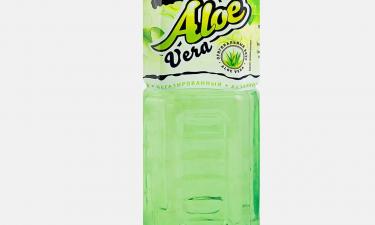The Natural World of the Human Mouth
According to scientists, the number of species of microorganisms that permanently reside in the human oral cavity amounts to 200-500. Of those, only fifty are named and studied. They have various looks: balloons, ovoids, bacilli, those that look like corn on the cob, bottle brushes, spirals, zippers, etc. What of the inhabitants of the mouth are our enemies, and what are friends?
Micro-organisms enter the mouth with food, water, and air. The presence of oral mucosa folds, interdental spaces, gums and other places where food, desquamated epithelium, and saliva are easily trapped creates favorable conditions for the reproduction of most microorganisms.
The oral microflora is divided into two groups:
- Saprophytic, that is permanent microflora of the oral cavity, whose presence is necessary for normal functioning of the dental system, as well as the entire body. Saprophytic microflora affects the condition of local immune system, prevents the development of pathological conditions, and supports the bacterial equilibrium.
- Pathogenic microflora, which affects the organs and tissues of the mouth and the entire body, causes the emergence and development of various diseases. This microflora ideally should not be there, or perhaps should be present in very limited quantities that do not substantially affect the oral cavity and the body.
The species composition of permanent oral microflora is normally quite stable and includes representatives of various microorganisms (bacteria, fungi, protozoa, viruses, etc. ). Predominant are anaerobic bacteria - streptococcus, lactic acid bacteria (lactobacilli), bacteroids, fuziformis, prevotelly, veillonella, spirochetes and actinomycetes.
When personal hygiene is at a low level or is missing altogether, the qualitative and quantitative composition of bacterial flora changes. Pathogenic microflora prevails, its quantity increases by the tens or hundreds of times within a very short time.
Lack of normal individual oral hygiene leads to formation of plaque whose germs are the main cause of most oral diseases.
The bacteria in plaque may even cause infectious lung disease. This discovery was made by scientists at New York University of Buffalo. They analyzed the composition of sputum and composition of plaque in humans considered as patients with pneumonia. In 10 out of 14 patients both dental plaque and the lungs revealed the same germs.
The scientists from the U.S. Center for Disease Control and Prevention issued evidence that suggests that bacteria living in plaque can cause stomach ulcer. Almost all patients with the ulcer had defective teeth and gums. Among people who do not suffer from stomach diseases, there are no more than 9% of patients with such defects.
The most harmful bacteria in the mouth is Streptococcus mutans that produce lactic acid. In October of 2002, the National Institute of Dental and Craniofacial Research in Vifesde, Maryland (USA), managed to find its full chromosome number: 1900 gene-villains.
Porphyromonas gingivalis, which causes the development of periodontitis, was identified only in 2001.
The traditional approach to oral hygiene is to try to destroy all microorganisms. But this is wrong, because some of them perform a useful function, stopping the penetration of more harmful microorganisms.
Promising experiments are conducted by Jeff Hillman, a microbiologist at the University of Florida. First, he found a strain of streptococcus variable, which suppresses the competing strains, egesting a special substance. Hillman then subjected this strain to genetic manipulation, and made sure that its ability to produce this antimicrobial agent increased, and the ability to produce acid that destroys teeth disappeared entirely.
The scientist infected young rats with this strep and put them on a diet with high sugar content. In contrast to rats with normal microflora of the mouth that were fed the same diet, the experimental animals retained healthy teeth. Hillman is now seeking permission to conduct experiments on humans. He said that one injection of modified micro-organisms protects teeth from tooth decay for life.
What types of personal hygiene tools are available today? They can be divided into five main groups:
- Mandatory - a toothbrush and toothpaste and / or tooth powder;
- Supplementary - dental floss and toothpicks;
- Secondary - dental elixirs, rinses, irrigators, teething rings, gum;
- Testing - a mirror, test solutions and tablets;
- Medical - fluoride tablets and solutions, herbs.
How to properly choose the right tool for the individual oral hygiene? To achieve a great therapeutic and preventive effect, it is necessary to know how and when, in what situations, and in what sequence one or another hygiene tools should be applied. Consult your doctor about it.
Liliana Lokatskaya
Medpulse
Subscribe to Pravda.Ru Telegram channel, Facebook, RSS!




